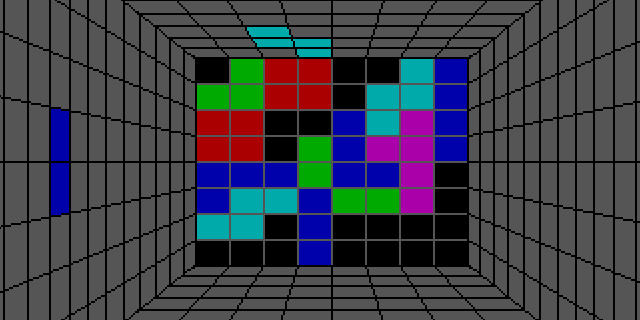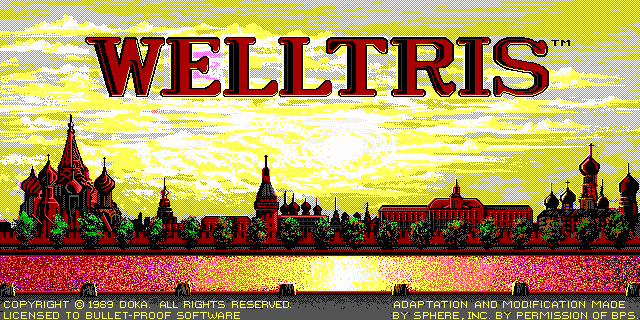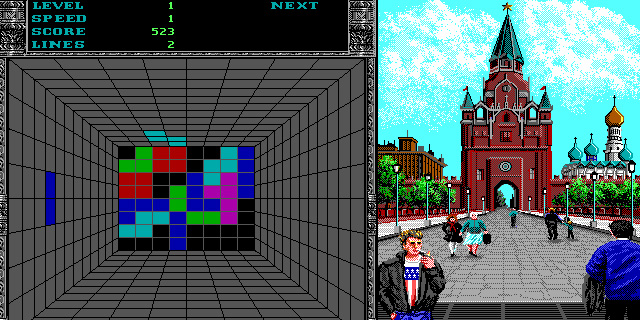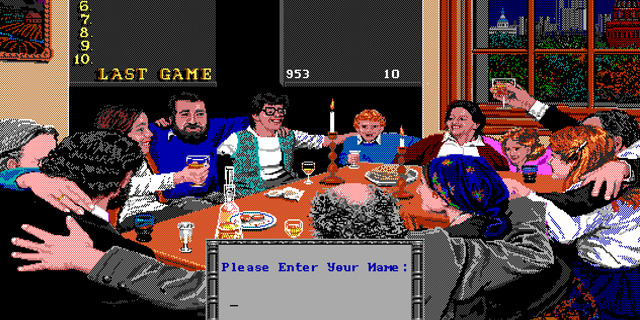
For many years now, Tetris has been considered one of the best games ever made. Appealing to thousands and played my millions, it must be the most successful game of all time, selling to both hardcore gamers and grandmas alike and pushing the Game Boy ahead of its competition. It has joined the ranks of Space Invaders and Ms. Pac-Man in mainstream culture, and had an endless influence on the industry.
But the original Tetris, while undeniably interesting, was a rough and unpolished affair. Ugly graphics, choppy movement and quirky rotation rules would take many years to get polished, and many thought the game could be greatly improved upon with some changes, like adding a third dimension.

It may seem like something silly, a product of the obsession the game industry has with polygons, but it makes sense. Tetris, like Checkers or Chess, is limited in depth by the size of its play field, but just making it bigger would led to all kinds of problems. You would need something to keep it in check, which is what makes Welltris a great variant (and by the original creator, to boot).
You see, most three-dimensional Tetris rule sets suffer from having the same gameplay of the original with just one dimension added. You normally play from the top of the well and try to fill it without leaving spaces, which immediately puts you in an uncomfortable situation: once you place a block, you can’t see what’s below it. It makes the game slow and overly focused on horizontal movement, which largely defeats the purpose of having more dimensions to play in. Sure, the result can still be good as evidenced by Block Out, the other big 3D Tetris variant, but the missed elegance and problems of perspective really prevents it from taking a comfortable spot.

Welltris dodges these issues by not actually having tridimensional movement, but using the well-shaped stack to give more room for movement. Basically, pieces slide down the walls, and meet at the bottom, where lines that cover it from side to side disappear like in any other Tetris variant. It’s like having four stacks, and the piece blob that creates in the middle of them is incredibly interesting, constantly changing and making pieces fit in surprising ways, creating an incredibly deep experience. It places the focus back on how pieces work with each other instead of speed or mashing the rotation button, which is a welcome change of pace and something not really found elsewhere in gaming.
A further twist in the gameplay occurs when a piece can’t quite fit at the bottom, causing it to stick out and block one of the sides, limiting your options. It’s like being close to the top in classic Tetris, but a basic mechanic compared to the creative use of corners, which can split pieces to make each part fall into a different direction, an advanced mechanic that I’m sure creates an amazing high-level of play.

Unfortunately, such high-level play is unlikely to ever happen. Forgotten amidst the hundreds of Tetris clones and variants, it never got past the quirky rotations system stage. In many ways it’s incredibly unpolished, the most egregious example being the “bonus pieces”, which are huge and have the same effect as a punch to the face. It’s the game that in a certain way couldn’t quite make it, but it’s almost there, and many would be willing to acquire that taste.



















